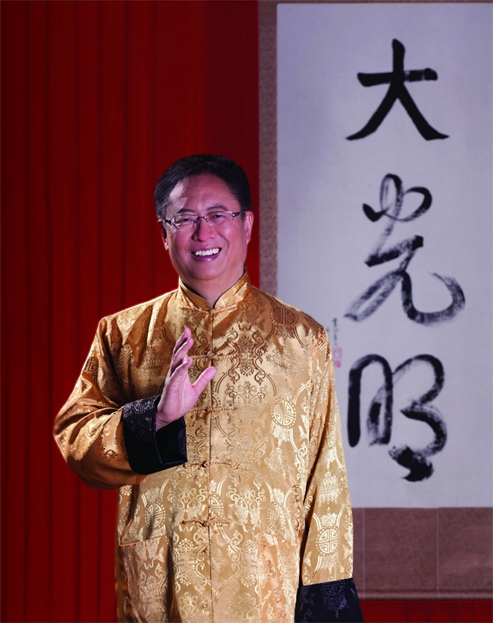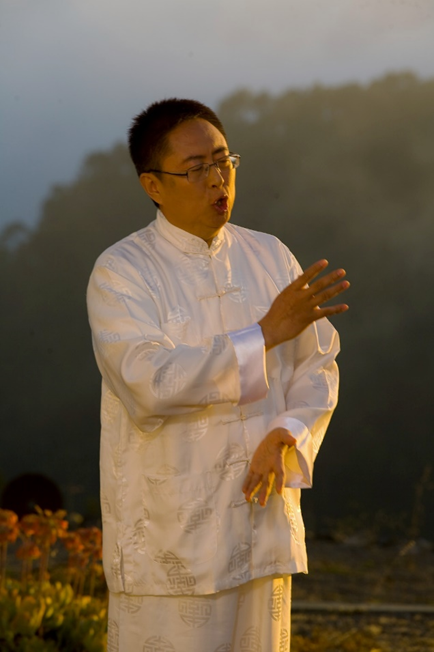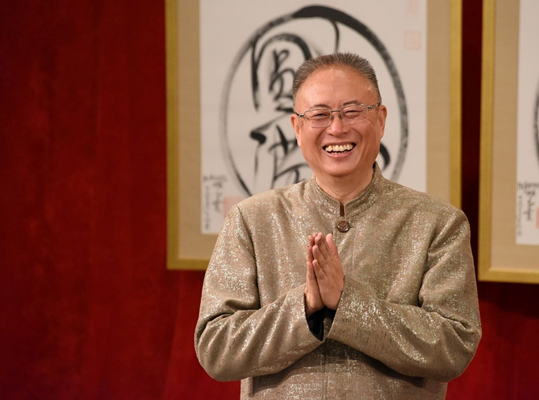Welcome to the Think Big and Go Global podcast! Today, we have the honour of interviewing Master Xi Gang Shah, a renowned healer, teacher, and author with a profound understanding of traditional Chinese medicine and holistic healing. Let’s dive into this fascinating conversation.
[ez-toc]
Master Shah, you have an impressive background in both Western medicine and traditional Chinese medicine. Could you share a bit more about your journey and how you became interested in these fields?
Thank you, Mirela. It’s a pleasure to be here. My journey into medicine and healing began at a young age. When I was just five years old, I had a life-changing experience with Western medicine. I fell ill, and my parents took me to a Western doctor who administered an injection. However, I unexpectedly slipped into a coma. It was my grandmother, a practitioner of traditional Chinese medicine, who came to the rescue by using acupressure techniques to revive me. This incident sparked my interest in healing and medicine.
As a teenager, I witnessed the suffering of a lady on the street who had asthma and heart issues despite medical treatment. This stirred a deep desire within me to help alleviate the suffering of others. I embarked on a journey to combine the best of Western medicine and traditional Chinese medicine to offer holistic healing solutions.
Traditional Chinese medicine is known for its holistic approach to health. Could you explain why this approach is so effective in maintaining overall well-being?
Certainly. Traditional Chinese medicine views the body as a complex system where physical health is intricately connected to mental and emotional well-being. There are several key elements that make this approach effective:
- Five Elements and Yin-Yang Theory: This system recognizes the balance of five elements (Wood, Fire, Earth, Metal, Water) and the interplay of Yin and Yang energies within the body. When these elements and energies are in harmony, health is maintained.
- Internal Factors: Emotions and mental states can have a significant impact on physical health. For example, emotions like anger can affect the liver, while worry can impact the spleen. Addressing both physical and emotional aspects is crucial for restoring balance.
- Meridian System: Traditional Chinese medicine identifies a network of meridians or energy channels through which vital energy (Qi) flows. Techniques like acupuncture and acupressure stimulate specific points along these meridians to correct imbalances and promote healing.
- Herbal Medicine: A wide range of natural herbs and substances are used to address various health issues. These herbs are carefully selected and combined to create personalized formulas for individuals.
- Diagnosis and Individualization: Traditional Chinese medicine places great emphasis on individualized diagnosis, considering a patient’s constitution, lifestyle, and unique symptoms. Treatment plans are tailored accordingly.
- Prevention: There’s a strong focus on preventive healthcare, aiming to maintain balance and prevent illness before it occurs. Practices like Tai Chi and Qigong promote overall well-being.
- Mind-Body Connection: Recognizing the connection between the mind and body, traditional Chinese medicine recommends practices like meditation and mindfulness to address emotional well-being.
- Energy Healing: Integrating energy and soul healing into traditional Chinese medicine helps restore balance at a deeper level, addressing the root causes of illness.
This holistic approach addresses the complete well-being of an individual, making it effective in maintaining health.
Could you share an example of how traditional Chinese medicine and your holistic healing methods have helped someone overcome a significant health challenge?
Certainly. I’ll share a remarkable case. In India, there was a famous movie star who had been deaf for 20 years. Despite various medical treatments, her condition had not improved. When she came to me, I applied acupuncture techniques by inserting just two needles. Within moments, I removed her hearing aid, and she could hear! It was a profound transformation.
This case illustrates how traditional Chinese medicine, when combined with holistic healing approaches, can address deep-seated issues and bring about remarkable results.

You’ve been named Master of the Year at the Fourth World Congress and have authored numerous books, including New York Times bestsellers. Could you tell us about your journey in becoming a renowned healer and teacher?
It has been an incredible journey of learning, sharing, and serving. I’ve had the privilege of studying and mastering various Asian arts, and I’ve always been driven by a deep desire to help humanity. My mission has been to bridge the gap between Western and traditional Chinese medicine, combining the best of both worlds.
In my books and teachings, I aim to empower individuals with knowledge and healing techniques. Recognition as Master of the Year at the Fourth World Congress and receiving honours in Chinese calligraphy have been humbling experiences. These accolades have provided a platform to reach and serve more people around the world.
You mentioned the creation of Tao Calligraphy. Could you explain what it is and how it contributes to healing and well-being?
Tao Calligraphy is a profound practice that combines art and healing. It involves creating calligraphic representations of ancient Tao wisdom and positive messages. When individuals trace these calligraphies and engage with them, they receive healing and blessings. It’s a unique way to access positive information and transform one’s life.
The practice of Tao Calligraphy aligns with the principles of traditional Chinese medicine and holistic healing by addressing the energy and soul aspects of an individual. It has been a powerful tool for healing and personal transformation.
In your opinion, what role can individuals play in maintaining their own health and well-being, especially in today’s fast-paced world?
Individuals have a crucial role to play in maintaining their health and well-being. Here are some key steps:
- Mindfulness: Cultivate mindfulness and self-awareness. Pay attention to your emotions, thoughts, and how they affect your body.
- Healthy Lifestyle: Prioritize a healthy lifestyle with balanced nutrition, regular exercise, and adequate rest.
- Stress Management: Learn stress management techniques, such as meditation and deep breathing, to promote emotional well-being.
- Preventive Care: Embrace preventive care and regular check-ups to catch potential health issues early.
- Holistic Approaches: Explore holistic approaches like Tai Chi, Qigong, and energy healing to maintain balance in mind and body.
- Positive Environment: Surround yourself with positivity and seek supportive communities.
Remember, your well-being is a lifelong journey, and taking proactive steps can lead to a healthier and more fulfilling life.
Finally, Master Shah, what message or advice would you like to share with our listeners who are on their own journey of empowerment and personal growth?
My message is simple yet profound: Embrace your inner power and believe in your ability to transform and heal. Each of you has the potential for greatness and well-being. Trust in the holistic approach to healing, and don’t hesitate to seek guidance and support on your journey. Together, we can create positive change and make a meaningful impact on the world.



